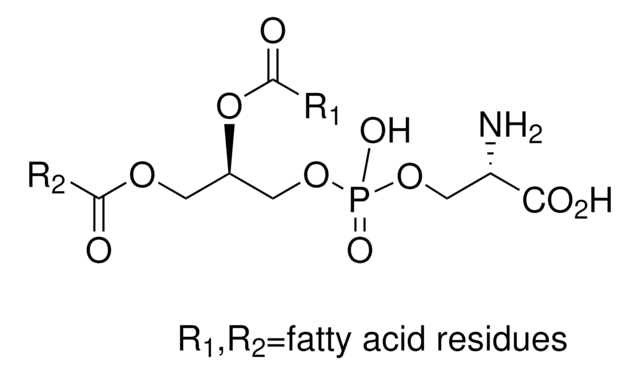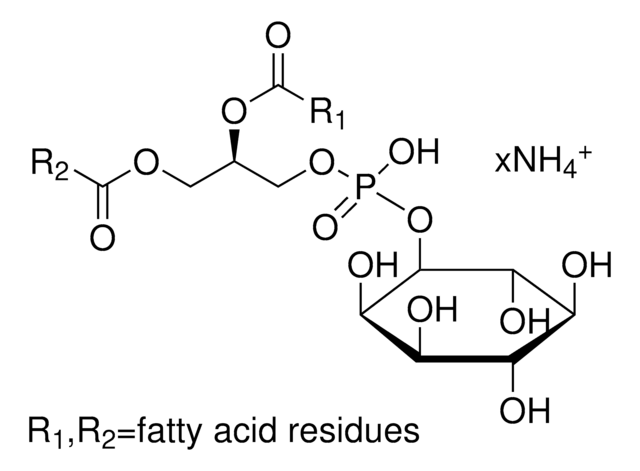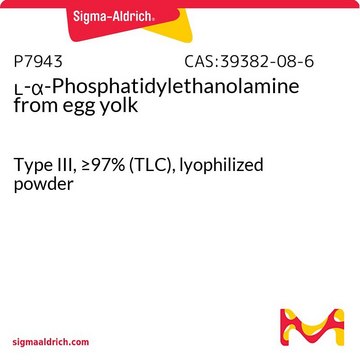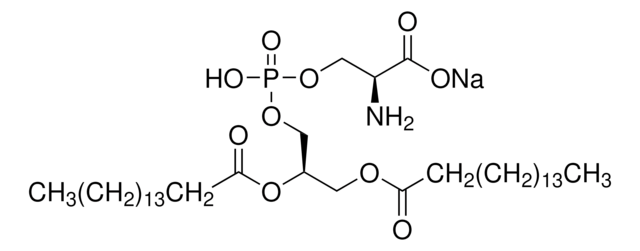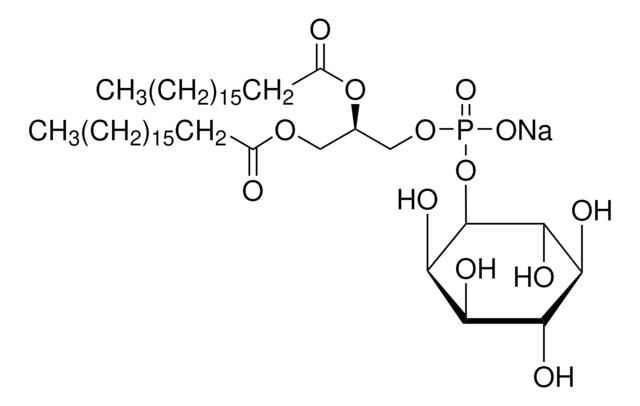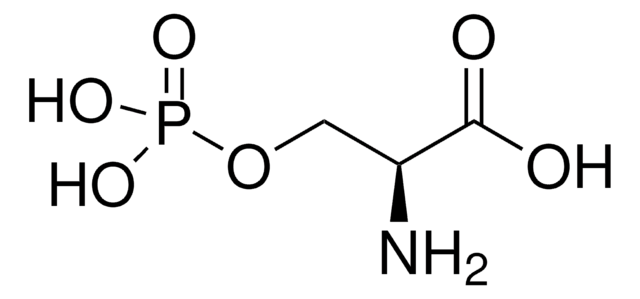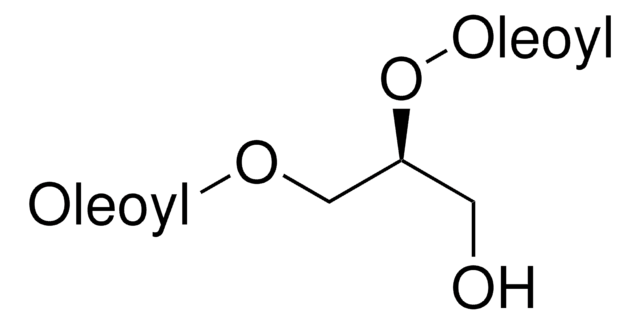P6641
1,2-Diacyl-sn-glycero-3-phospho-L-serine solution
≥97%, from bovine brain, chloroform:methanol solution
Synonym(s):
3-sn-Phosphatidyl-L-serine, L-α-Phosphatidyl-L-serine, PS, Phosphatidylserine
About This Item
Recommended Products
biological source
bovine brain
Quality Level
Assay
≥97%
form
chloroform:methanol solution
functional group
phospholipid
lipid type
phosphoglycerides
shipped in
dry ice
storage temp.
−20°C
Application
- Electrophoretic Light Scattering and Electrochemical Impedance Spectroscopy Studies of Lipid Bilayers Modified by Cinnamic Acid and Its Hydroxyl Derivatives.: This study explores the modification of lipid bilayers, specifically focusing on the interactions between cinnamic acid derivatives and lipid structures, including 1,2-Diacyl-sn-glycero-3-phospho-ʟ-serine solutions. It employs electrophoretic light scattering and electrochemical impedance spectroscopy to elucidate the electrochemical properties and stability of these modified bilayers, highlighting their potential in biophysical and biochemical applications (Naumowicz et al., 2020).
- Silica-based Monolithic Capillary Columns Modified by Liposomes for Characterization of Analyte-Liposome Interactions by Capillary Liquid Chromatography.: This research investigates the use of silica-based monolithic capillary columns modified with liposomes, including 1,2-Diacyl-sn-glycero-3-phospho-ʟ-serine, to study analyte-liposome interactions. The capillary liquid chromatography technique used in this study provides insights into the behavior of analytes within lipid environments, which is crucial for understanding membrane interactions and developing lipid-based delivery systems (Moravcová et al., 2013).
Biochem/physiol Actions
Caution
Analysis Note
Signal Word
Danger
Hazard Statements
Precautionary Statements
Hazard Classifications
Acute Tox. 3 Inhalation - Acute Tox. 4 Oral - Carc. 2 - Eye Irrit. 2 - Flam. Liq. 3 - Repr. 2 - Skin Irrit. 2 - STOT RE 1 Oral - STOT SE 2 - STOT SE 3
Target Organs
Eyes,Central nervous system, Liver,Kidney, Respiratory system
Storage Class Code
3 - Flammable liquids
WGK
WGK 3
Flash Point(F)
80.1 °F - closed cup
Flash Point(C)
26.7 °C - closed cup
Personal Protective Equipment
Choose from one of the most recent versions:
Already Own This Product?
Find documentation for the products that you have recently purchased in the Document Library.
Customers Also Viewed
Our team of scientists has experience in all areas of research including Life Science, Material Science, Chemical Synthesis, Chromatography, Analytical and many others.
Contact Technical Service